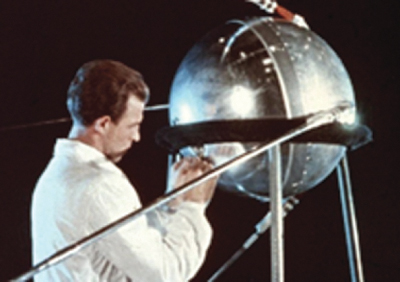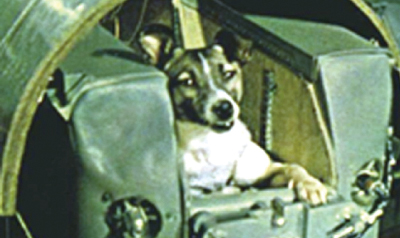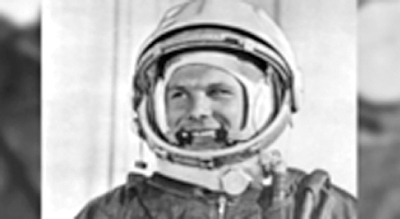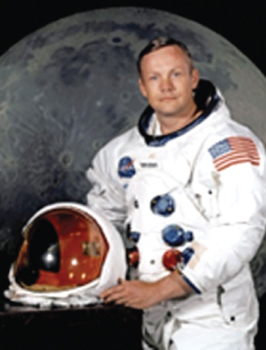A long time ago, people could only look up at the stars and wonder what was out there. They used telescopes to look at the Moon, the planets, and stars billions of miles away—but no one had ever gone to space.
In the second half of the 20th century, scientists built powerful rockets that could fly fast enough to escape Earth’s gravity and travel into orbit. This made space exploration possible for the first time.
Back in the 1930s and 1940s, Germany began building long-distance rockets during World War II. Near the end of the war, a rocket called the V-2 missile was used to attack cities like London. These rockets could travel over 320 km and flew very high and fast—over 100 km up and more than 5,600 km miles per hour.
After the war, both the United States and the Soviet Union (now Russia) started building their own rockets. Instead of using them for war, they began working on ways to use rockets for peaceful space missions—and that’s how the race to explore space began.
The very first object to reach space was the V-2 rocket. On June 20, 1944, a V-2 reached an altitude of 175 km, making it the first rocket to reach space. It flew higher than any rocket before its time and scientists used that same rocket technology for future space missions.
The first thing in Space
 In 1957, the Soviet Union launched a shiny silver ball into space. It was called Sputnik 1, and it was the first satellite ever to orbit the Earth. It didn’t do much—just beeped signals back to Earth—but it made history!
In 1957, the Soviet Union launched a shiny silver ball into space. It was called Sputnik 1, and it was the first satellite ever to orbit the Earth. It didn’t do much—just beeped signals back to Earth—but it made history!
People all over the world looked up and said, “Wow, space travel is really happening”
A dog in space?
 The first living creature to orbit Earth was a Moscow street dog named Laika. In 1957, she rode aboard Sputnik 2. Sadly, she didn’t survive the trip and was never expected to, but her journey helped scientists learn how a living being reacts to conditions in space. Her death caused a lot of criticism outside of USSR were many questioned the ethics of sending an innocent dog into space.
The first living creature to orbit Earth was a Moscow street dog named Laika. In 1957, she rode aboard Sputnik 2. Sadly, she didn’t survive the trip and was never expected to, but her journey helped scientists learn how a living being reacts to conditions in space. Her death caused a lot of criticism outside of USSR were many questioned the ethics of sending an innocent dog into space.
First humans in space
 In 1961, a brave Russian man named Yuri Gagarin became the first human in space. He flew around the Earth in a spacecraft called Vostok 1. The whole trip took just 108 minutes, but it was a giant leap for space exploration. The first ever U.S. satellite was Explorer 1, which went into orbit on January 31, 1958. In 1961, Alan Shepard became the first American to fly into space. On February 20, 1962, John Glenn’s historic flight made him the first American to orbit Earth.
In 1961, a brave Russian man named Yuri Gagarin became the first human in space. He flew around the Earth in a spacecraft called Vostok 1. The whole trip took just 108 minutes, but it was a giant leap for space exploration. The first ever U.S. satellite was Explorer 1, which went into orbit on January 31, 1958. In 1961, Alan Shepard became the first American to fly into space. On February 20, 1962, John Glenn’s historic flight made him the first American to orbit Earth.
A giant step on the moon
 In 1969, people cheered all around the world as Neil Armstrong and Buzz Aldrin walked on the Moon. They flew there in a spaceship called Apollo 11 where Neil said the famous words:
In 1969, people cheered all around the world as Neil Armstrong and Buzz Aldrin walked on the Moon. They flew there in a spaceship called Apollo 11 where Neil said the famous words:
“That’s one small step for man, one giant leap for mankind.”
It was the first time humans had ever stepped onto another world.
What has space exploration given us?
Going to space helped us learn more about Earth, science, and the universe. It has also led to inventions like GPS, satellite TV, memory foam, and even better baby food.
Today, astronauts live on the International Space Station (ISS). Robots explore Mars, and new rockets are being built to take us back to the Moon—and maybe even to Mars!
It’s been a long journey but space exploration is just the beginning….. Next month let’s learn all about the historic journey to the Moon.







